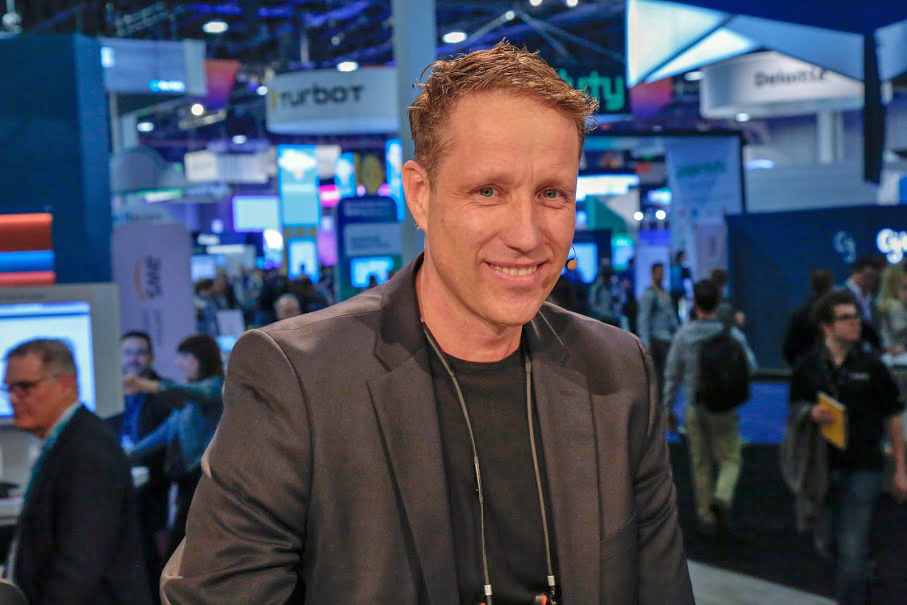 CLOUD
CLOUD
 CLOUD
CLOUD
 CLOUD
CLOUD
Calling a help desk to see where a package has gone astray, to troubleshoot glitchy software or to cancel an upcoming flight without incurring additional charges can be frustrating and unpleasant for a number of reasons. But stellar audio technology combined with real-time data processing can minimize miscommunications.
But for both callers and the help desk representatives, a primary frustration of call center communications is unclear audio, according to Holger Reisinger (pictured), senior vice president of large enterprise solutions at GN Audio A/S (Jabra). Background noise from the call center, static on the line, or breathing noises caught in the microphone can lead to issues.
As an Amazon Web Services Inc. technology partner, Jabra is working to eliminate those issues and even prevent further stress for those dialing into call centers.
Reisinger spoke with John Walls (@JohnWalls21), host of theCUBE, SiliconANGLE Media’s mobile livestreaming studio, and co-host Justin Warren (@jpwarren), chief analyst at PivotNine Pty Ltd., during AWS re:Invent in Las Vegas. In addition to technology-boosted headsets, the trio discussed how Jabra leverages a bevy of AWS services, from the data center to Amazon Connect, AWS’ cloud-based client contact center. (* Disclosure below.)
How a customer perceives a help desk representative reflects on how they perceive a company in general, according to Reisinger. A low-quality call can lead to poor outcomes and loss of business. As the maker of high-end headsets, Jabra knows how important it is for organizations to have crystal-clear audio, as that leads to crystal-clear communications.
To go a step further, optimized audio makes it easier to sense the nuances of human speech and the emotions expressed by customers, giving them the best call center experience possible, Reisinger explained.
“Our devices … are not just an accessory to a phone system transmitting human audio; they are now a business-critical element of the whole infrastructure,” Reisinger said. “They are digital, they’re intelligent, and they can also listen to how people say things and not just what has been said in that conversation.”
One of the latest developments in intelligent headset design is taking the raw data from a call and feeding it directly into the cloud, where the emotions and nuances are analyzed in real time. For example, it’s now possible during a call to measure agent friendliness against customer anger and show it to an agent in graph form so they can adjust responses in real-time. Amazon Connect powers this capability, and it is also available as a pre-packaged solution to call center clients.
“There’s a lot of computing that is happening in the device in order to get the best sound, the best pickup of human voice, but also provide crystal-clear sound … so anything Amazon is doing to drive things digital, it’s definitely in our favor,” Reisinger concluded.
Watch the complete video interview below, and be sure to check out more of SiliconANGLE’s and theCUBE’s coverage of AWS re:Invent. (* Disclosure: Jabra sponsored this segment of theCUBE. Neither Jabra nor other sponsors have editorial control over content on theCUBE or SiliconANGLE.)
Support our mission to keep content open and free by engaging with theCUBE community. Join theCUBE’s Alumni Trust Network, where technology leaders connect, share intelligence and create opportunities.
Founded by tech visionaries John Furrier and Dave Vellante, SiliconANGLE Media has built a dynamic ecosystem of industry-leading digital media brands that reach 15+ million elite tech professionals. Our new proprietary theCUBE AI Video Cloud is breaking ground in audience interaction, leveraging theCUBEai.com neural network to help technology companies make data-driven decisions and stay at the forefront of industry conversations.